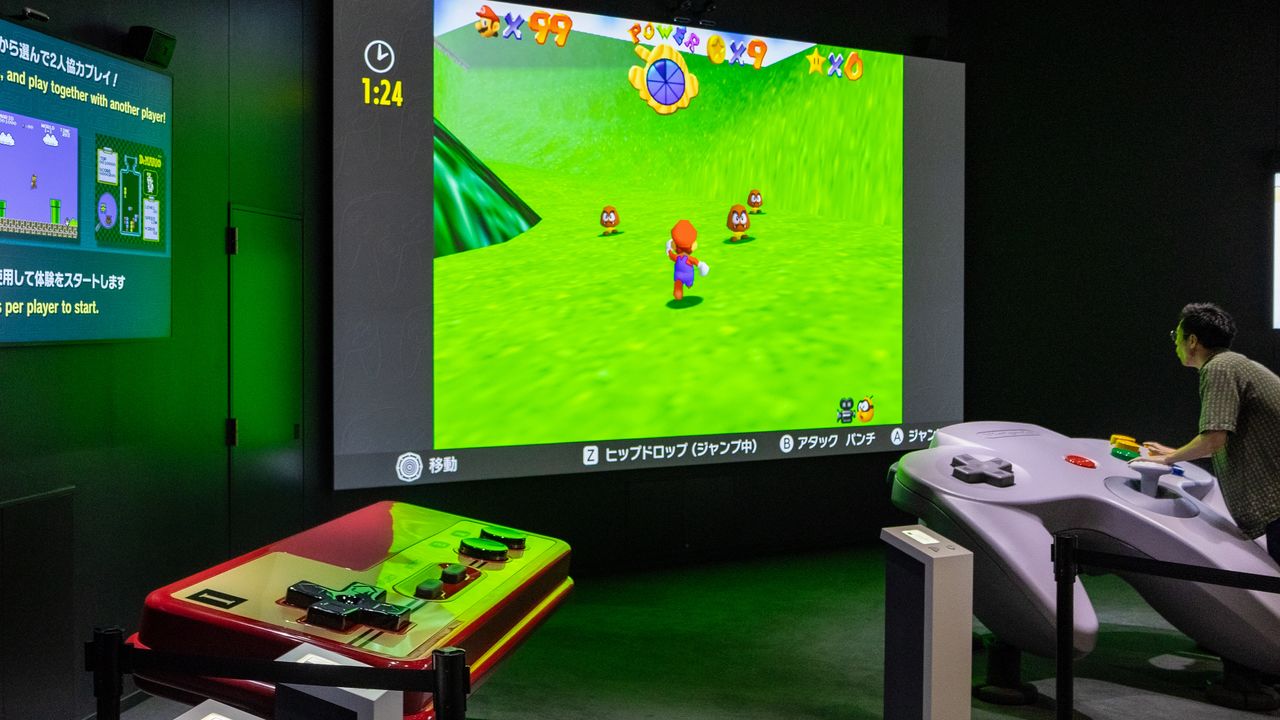
Giant Controllers and Gaming History at Kyoto’s Nintendo Museum
Guideto Japan
Travel- English
- 日本語
- 简体字
- 繁體字
- Français
- Español
- العربية
- Русский
The Nintendo Museum in Kyoto shares the history of the company from its 1889 founding to the present day, through product exhibits and interactive gaming installations. The building, once the company’s Uji Ogura factory, now has been renovated for public access.
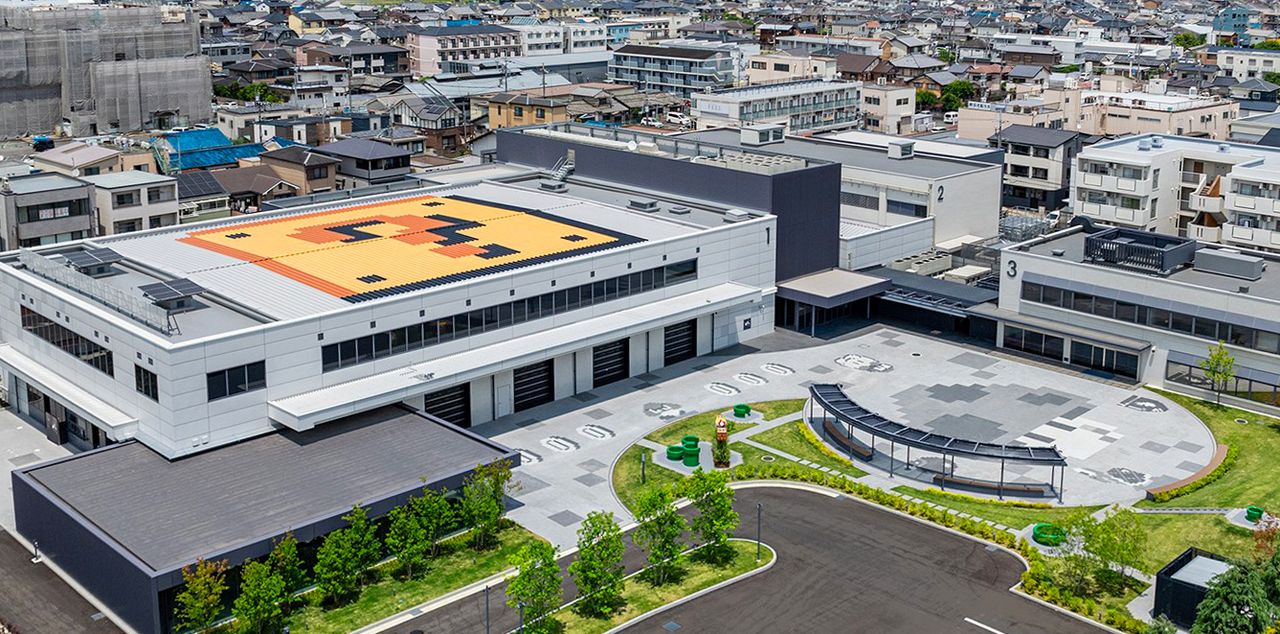
The Nintendo Museum is located near Ogura Station in Uji, Kyoto Prefecture. (© Nintendo)
The first floor is dedicated to interactive experiences showcasing the company’s digital expertise. The second floor is a display area, with exhibitions of the many games and toys that Nintendo has sold throughout its long history.
Gaming History
We begin by riding the escalator to the second floor. Large replicas of controllers hanging from the ceiling catch the eye—there are 12 in all, from the 1983 Family Computer, or Famicom (marketed overseas in different casing as the Nintendo Entertainment System) to the latest Switch, all at nine times actual size.
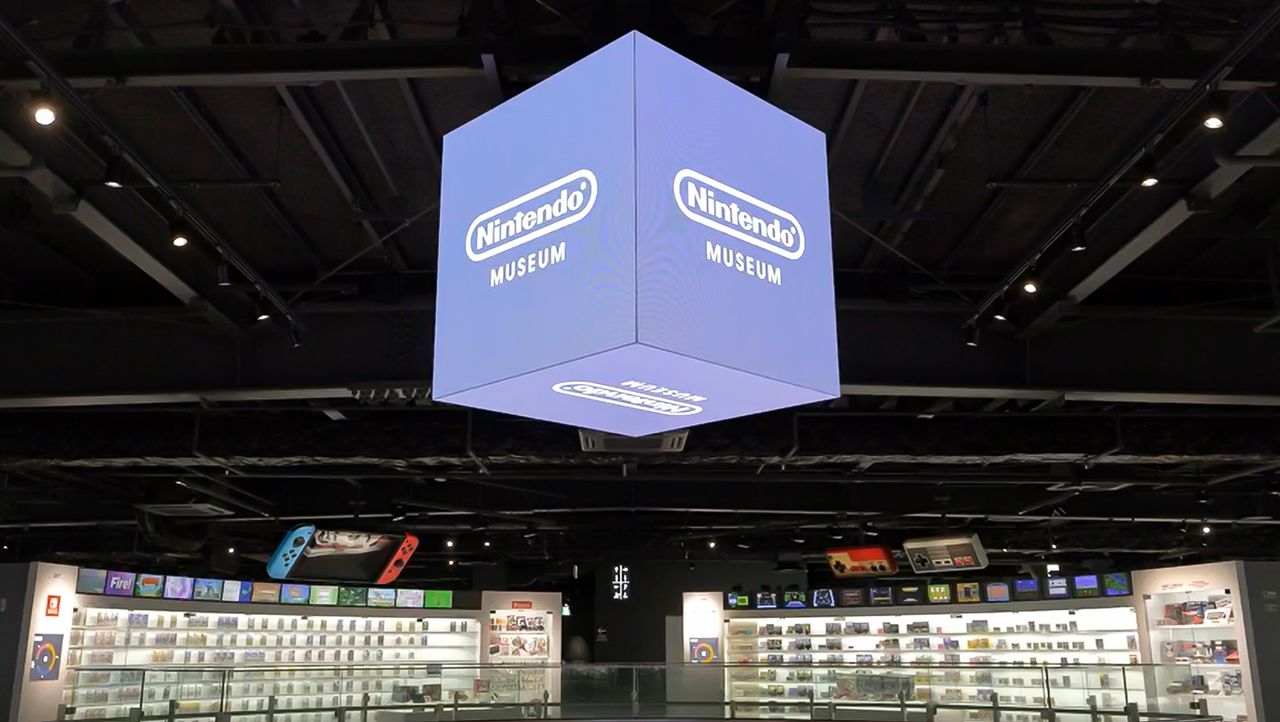
The display floor exhibits software from through the company’s history. (© Nintendo)
Under each controller are past games, including Japanese and international versions. Visitors can also listen to the music from the games.
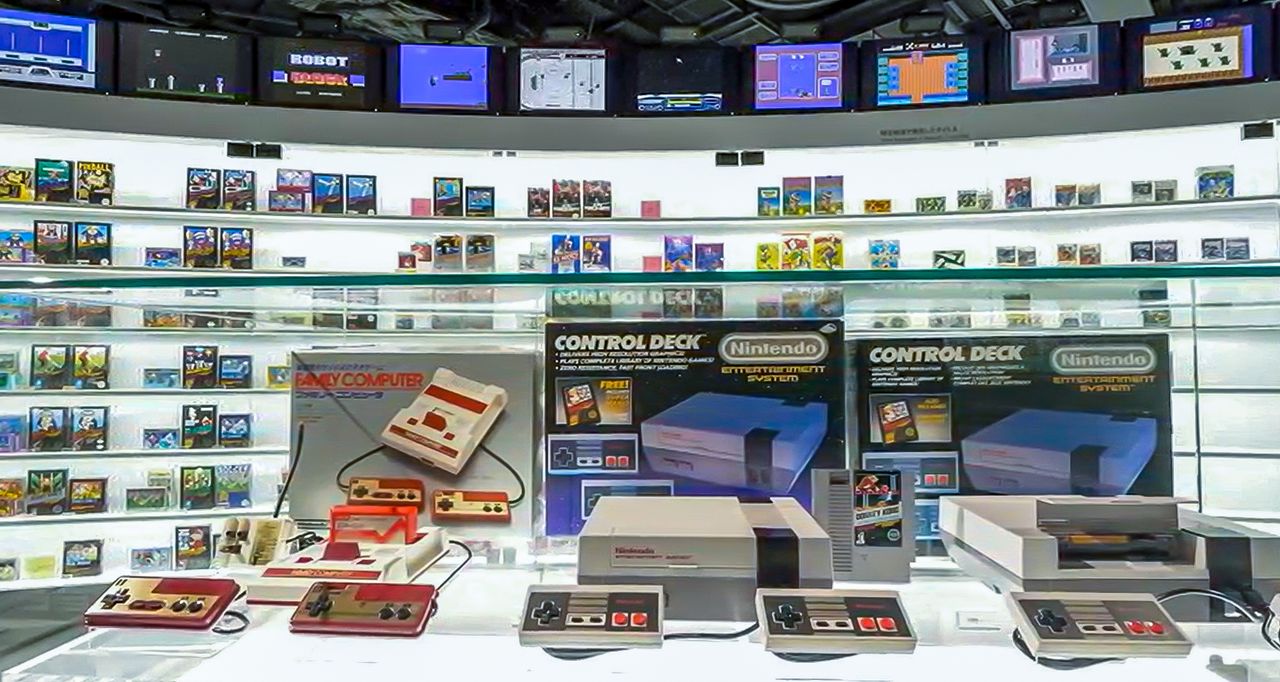
Past consoles bring back the memories. (© Nintendo)
Nintendo has been around for much longer than the video game era. There are also displays of traditional games and toys, including some with electronic components.
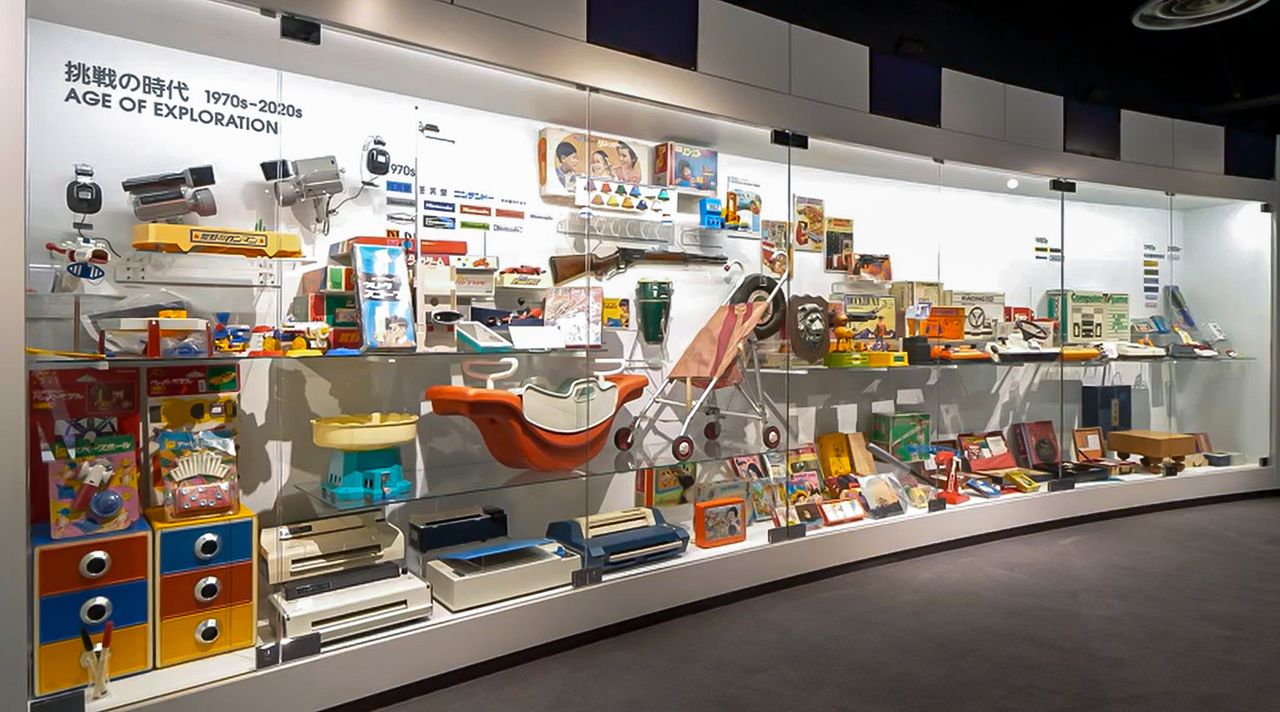
Toys and other products from Nintendo’s long history. (© Nintendo)
Recreated Video Game Classics
On the first floor is the activity area. When they enter, visitors are handed a card with 10 digital coins on it to use while playing the games.
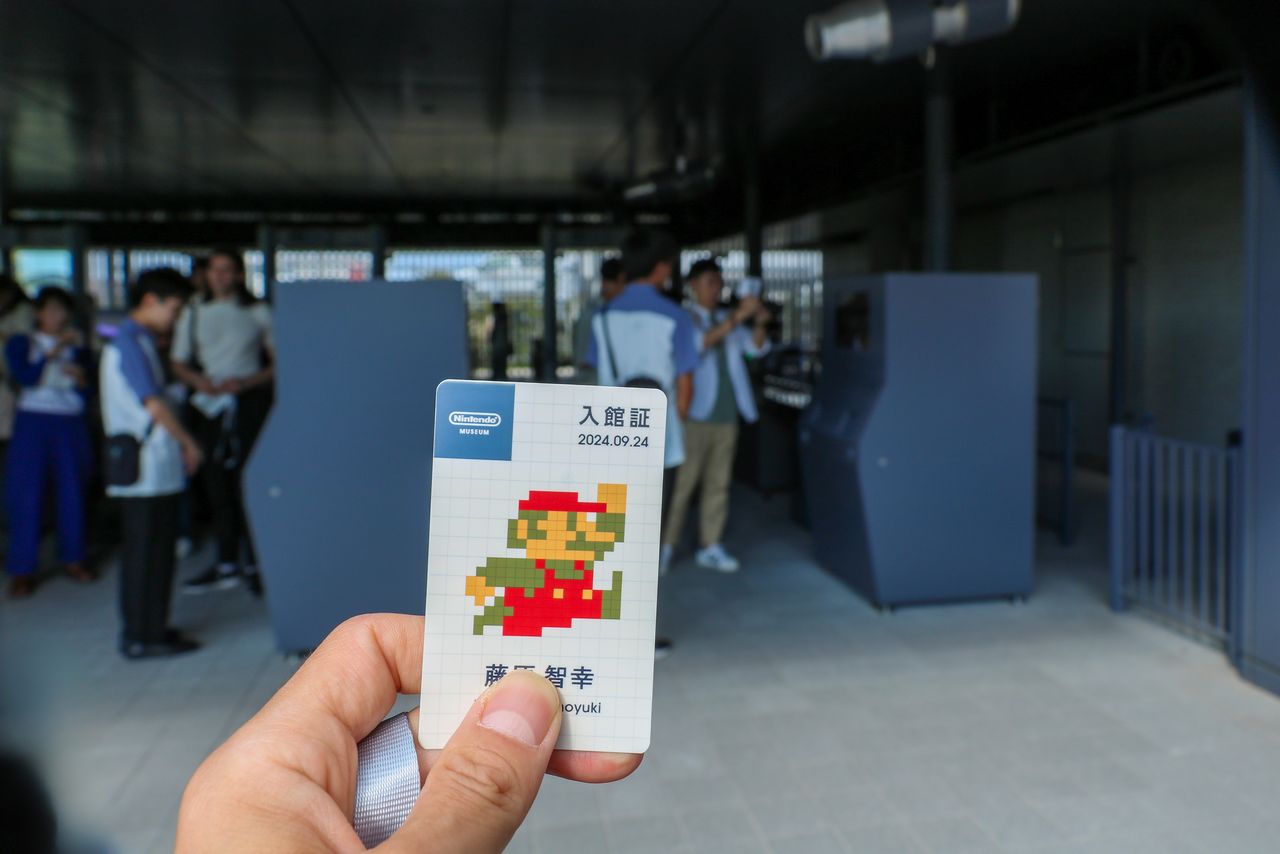
An entrance pass, loaded with digital coins. (© Nippon.com)
The floor re-creates past products with the latest technology. It is OK to take photos in this area, too.
A group of massive game controllers stands out here. This area features versions of the controllers for the company’s hit game consoles, like the 1983 Famicom, the 1996 Nintendo 64, and the 2006 Wii, inflated to giant size. They are too big for anyone to use alone, so pairs will have to work together, with one person managing the direction pad while another pushes the A/B buttons. As the controls run just like the usual, smaller versions, it is possible to speed Mario up when pushing B and holding left or right on the control pad.
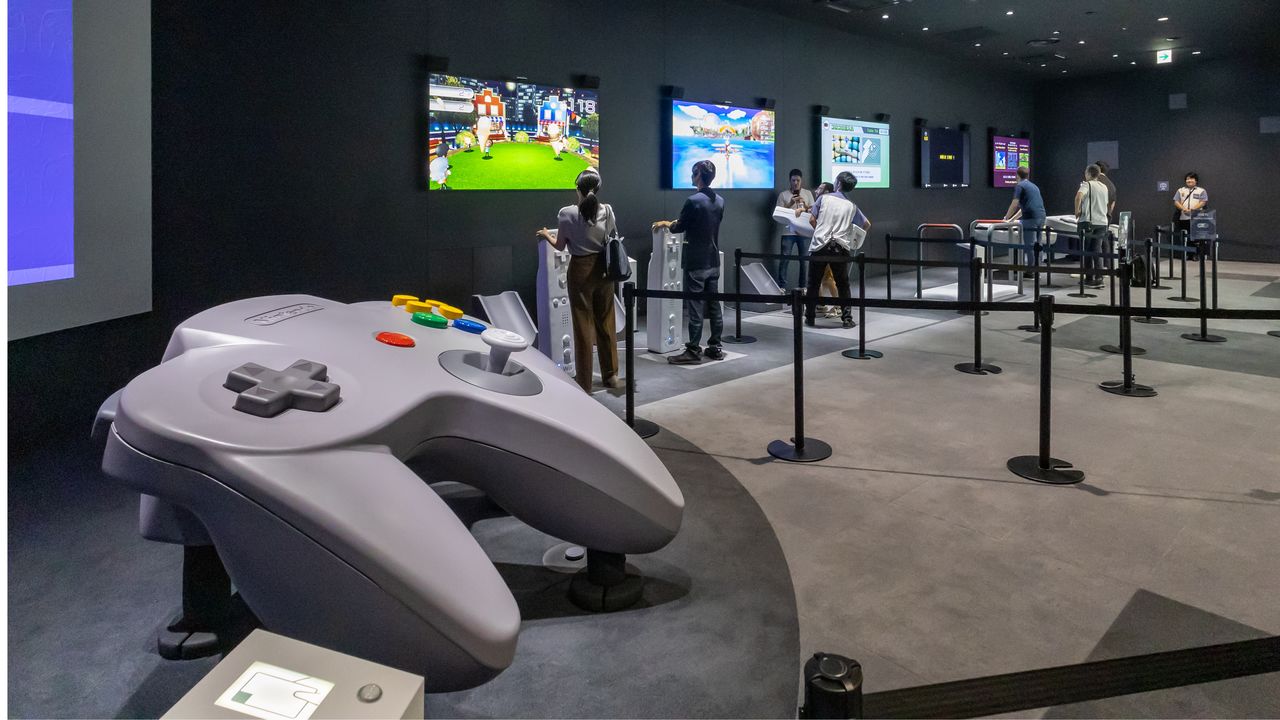
Bring a friend to play games with a giant controller. (© Nippon.com)
There is even a spot to try out a giant version of the Game & Watch, the first series of portable LCD screen games that Nintendo released in the 1980s. There are two games available, the first release Ball and a later hit, Manhole, but in these versions, players use their own shadows to control the game.
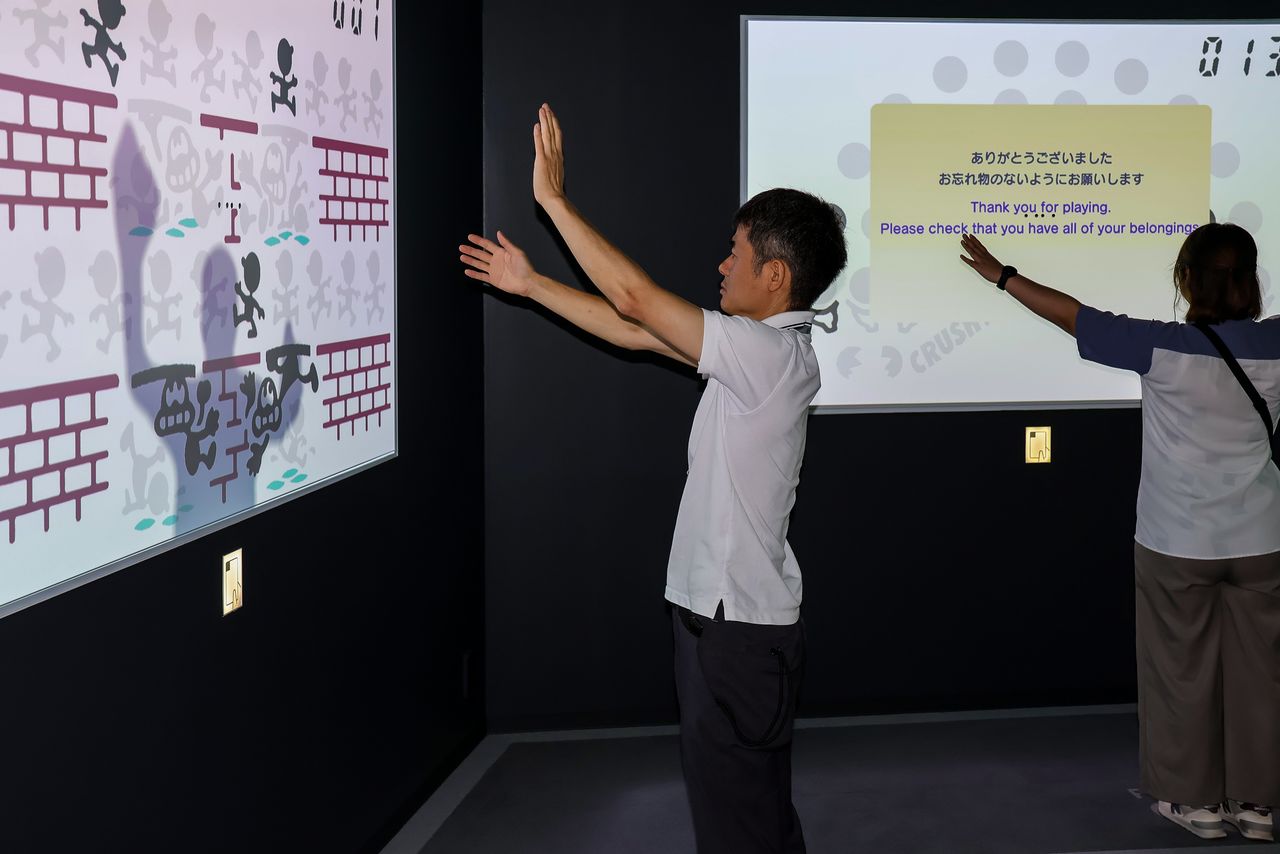
A unique way to control a game. (© Nippon.com)
It is interesting to note that Nintendo’s cross-shaped control pad was first used on the Game & Watch Donkey Kong game, and it proved such an effective design for directional control that it is still used today on the latest Nintendo Switch controllers.
Experiencing Nintendo’s Card Game Roots
Nintendo started out as a maker of cards for hanafuda, a traditional Japanese game. Until it broke into the video game business, its primary business was hanafuda, standard playing cards, Hyakunin isshu cards featuring famous old poems split across cards for matching, and ingenious toys.
Shigureden SP is an area that brings visitors closer to the company’s origins. This part of the museum has giant versions of the Hyakunin isshu cards projected onto the floor; players can walk around using a provided smart device to match the cards. It is an excellent way to get a sense of the global game company’s earliest roots.
On a side note, this area is actually based on Touch de Tanoshimu Hyakunin-Isshu: DS Shigureden, a version of the card game released in 2006 for the Nintendo DS portable game console.
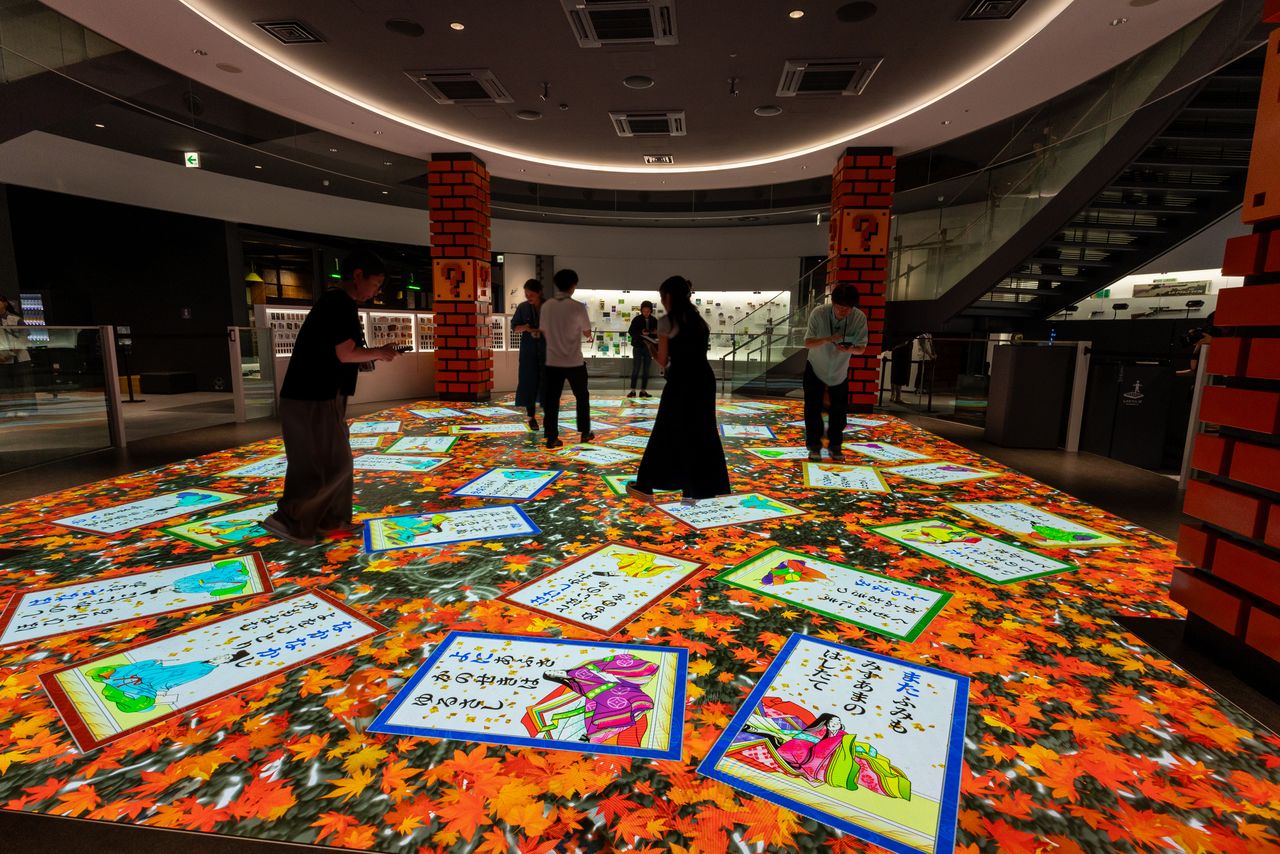
Up to 25 people can play the Hyakunin isshu matching game. (© Nippon.com)
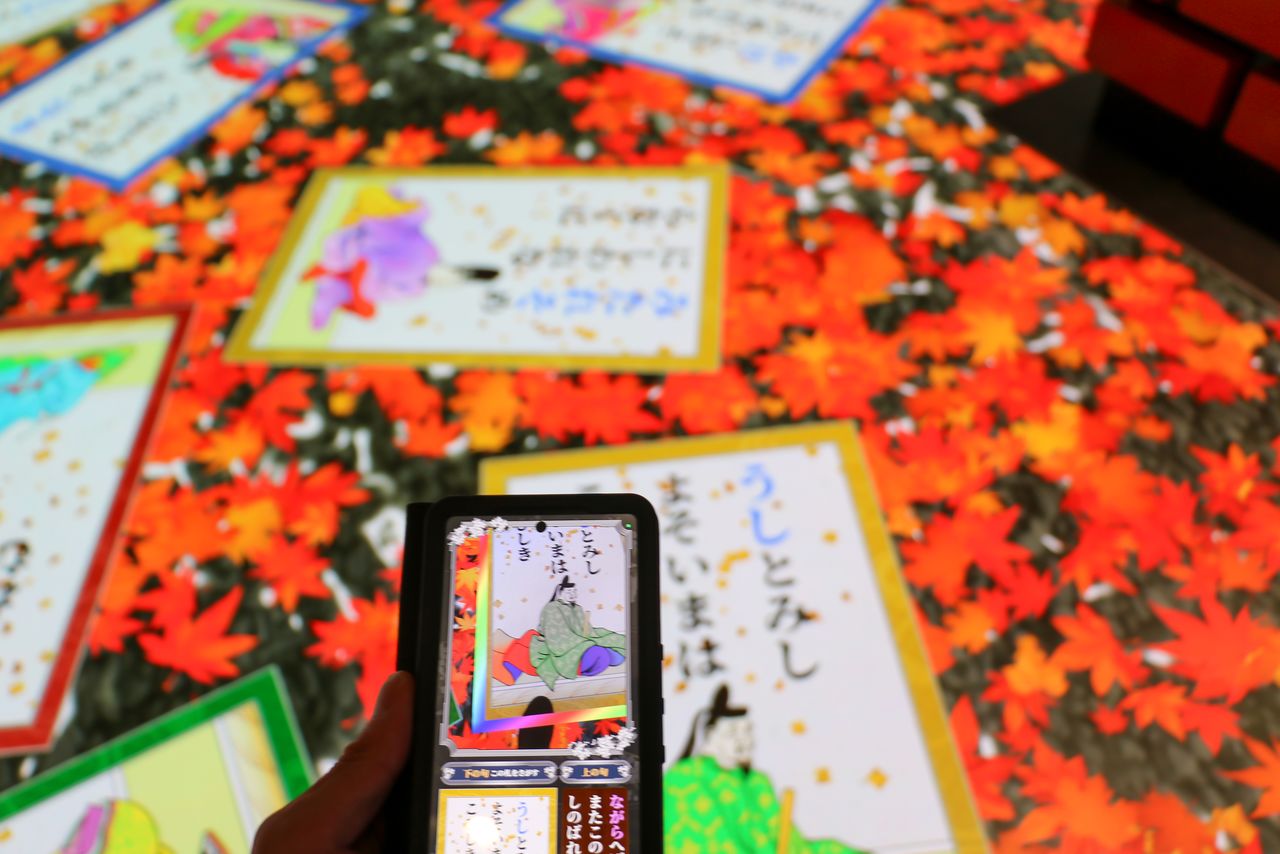
Players use special smart devices provided by the museum. (© Nippon.com)
Another glimpse into the company’s origins can be had through the reservation-only Let’s Make Hanafuda! card crafting activity. The program offers a special kit so visitors can choose their favorite pattern to color and assemble into a custom hanafuda card. There is also a competition area to play the game using modern digital technology, along with rule explanations for those new to the game.
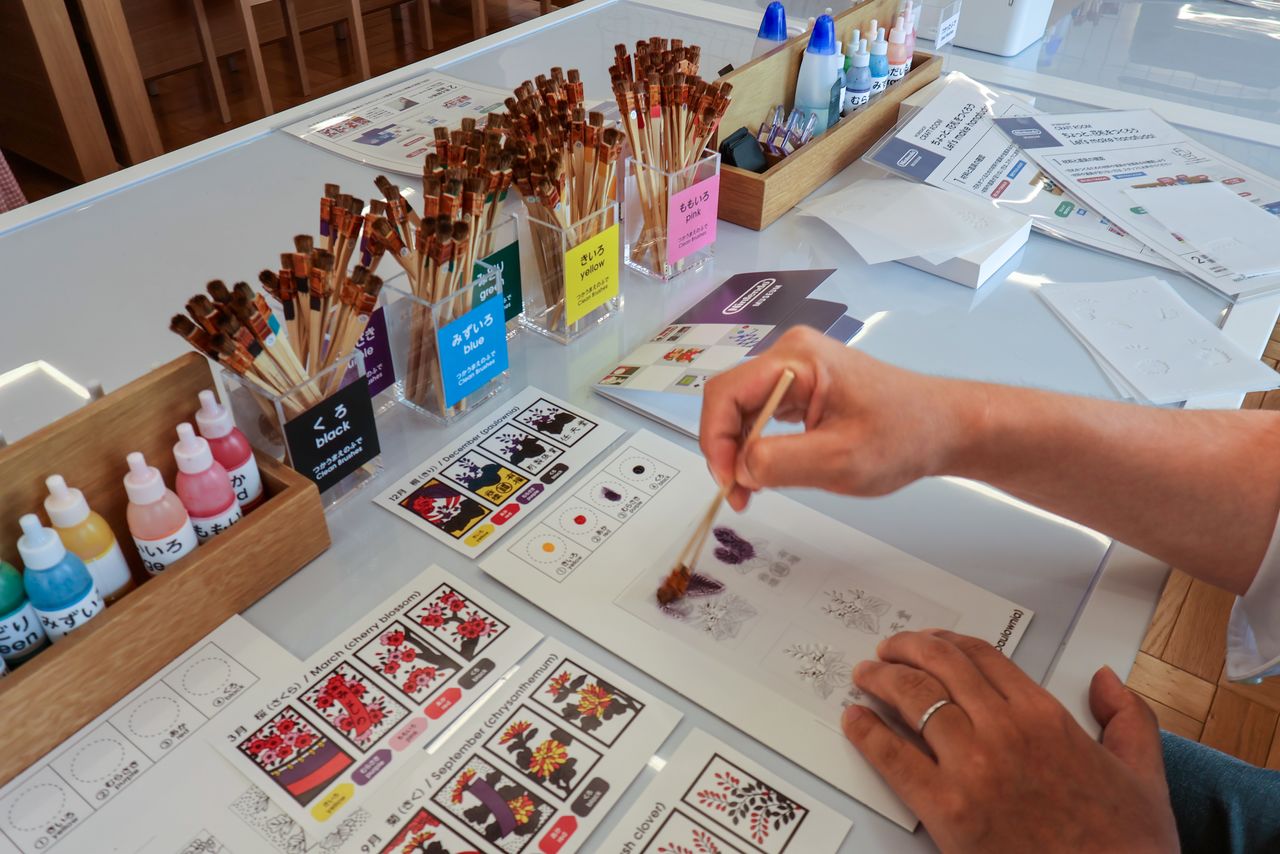
Making brightly colored hanafuda cards. (© Nippon.com)
Visitors can also try out a rich lineup of toys. One such is the Ultrahand, a toy that lets you extend your reach and grab targets. Nintendo had a hit on its hands when it released the original in 1966. At the Nintendo Museum, visitors can use Ultrahand to catch balls rolling down a lane and drop them into a pipe as the digital screen in the background changes.
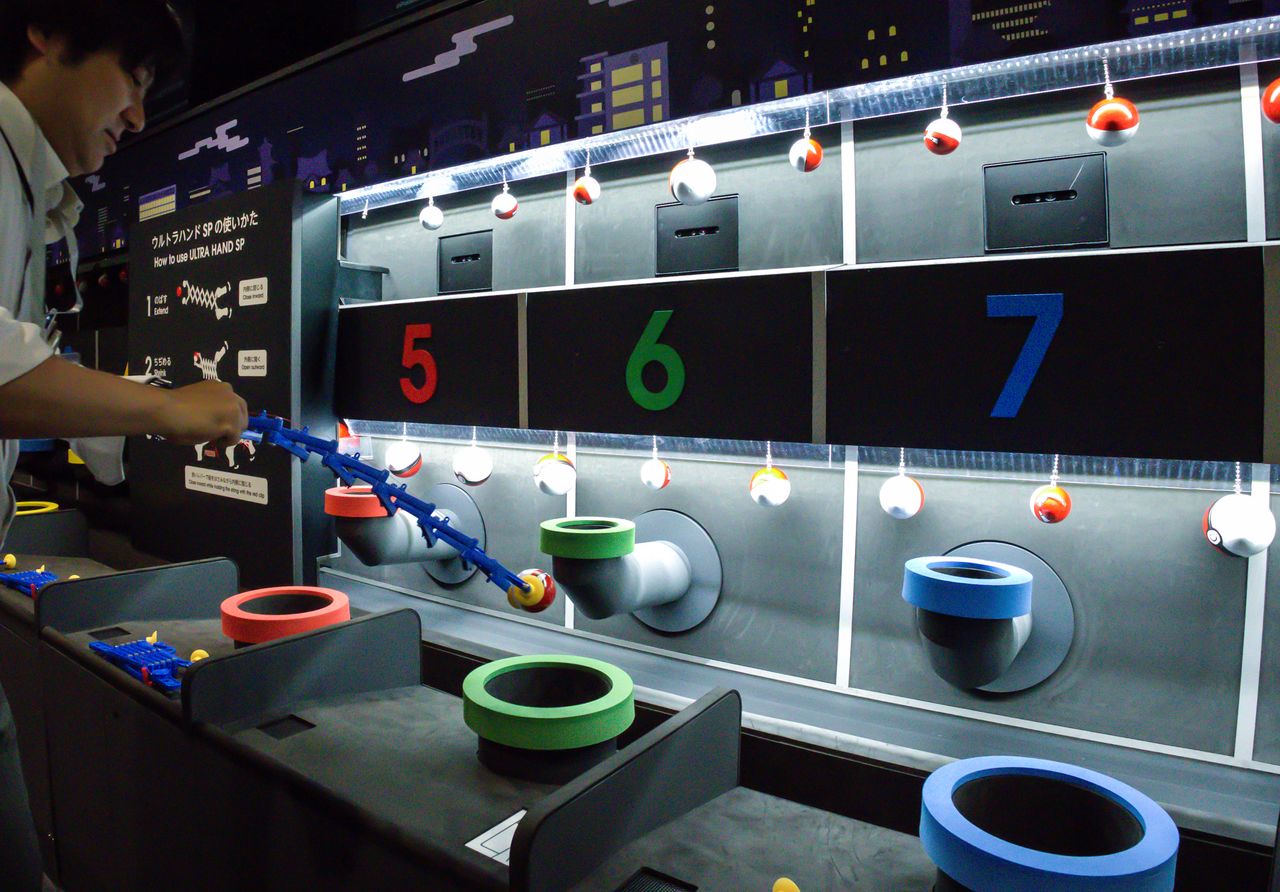
Catching balls with the Ultrahand. (© Nippon.com)
Nintendo also had electronic toys before the Game & Watch or Famicom. One of those was the Love Tester from 1969. The machine featured metal grips that used a galvanometer to measure the dampness of the hand, and proposed to “test the love level” of a couple holding hands. It raised quite a stir, being released at a time when it was rare for men and women to hold hands in public in Japan.
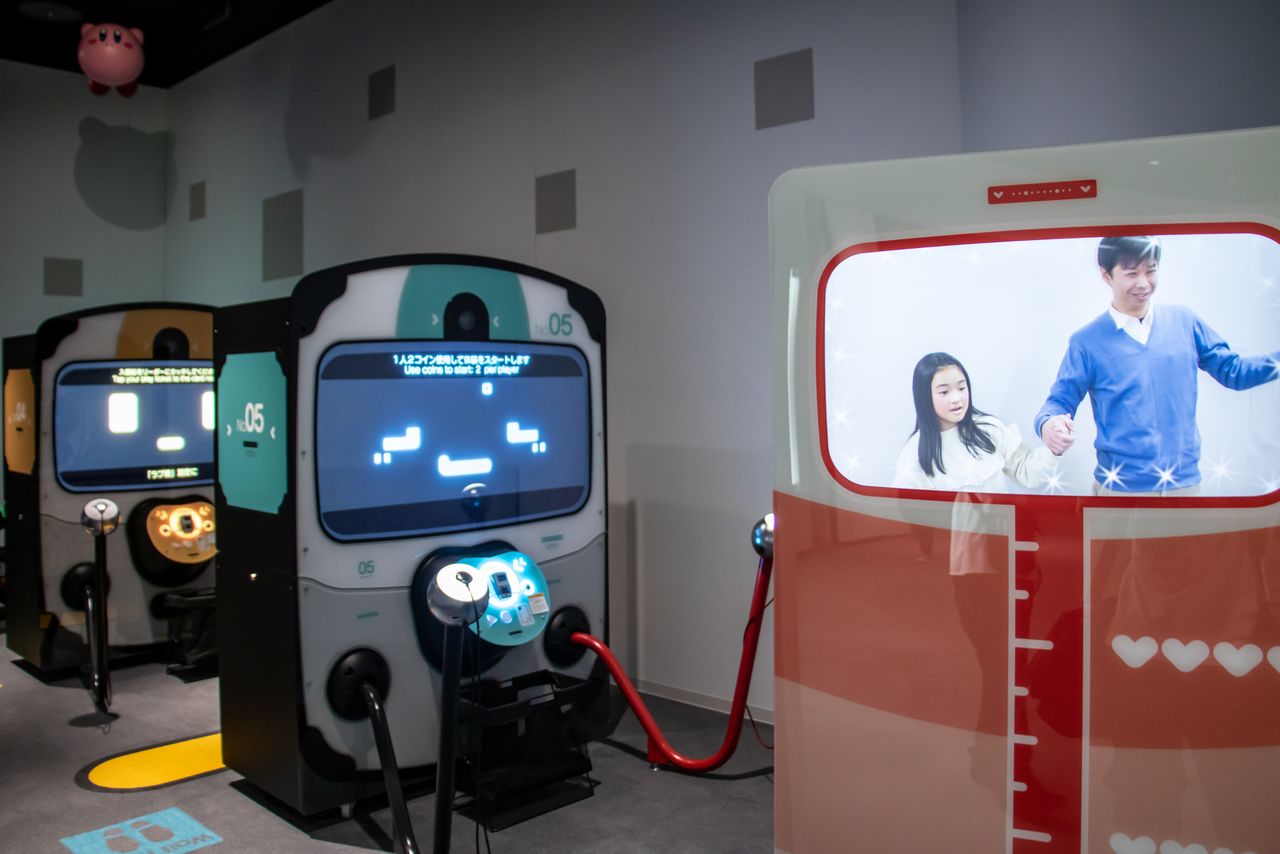
Check your love level with a re-creation of the Love Tester. (© Nippon.com)
The museum has a Love Test SP section where two people work together on tasks as they try to raise the Love Level test score.
Others are updated versions of the Ultra Machine, a mini batting cage with a ping pong ball launcher so people could set up batting cages at home, (originally released in 1968); and Zapper & Scope, a light-based shooting game—this version featuring enemies from the Mario series.
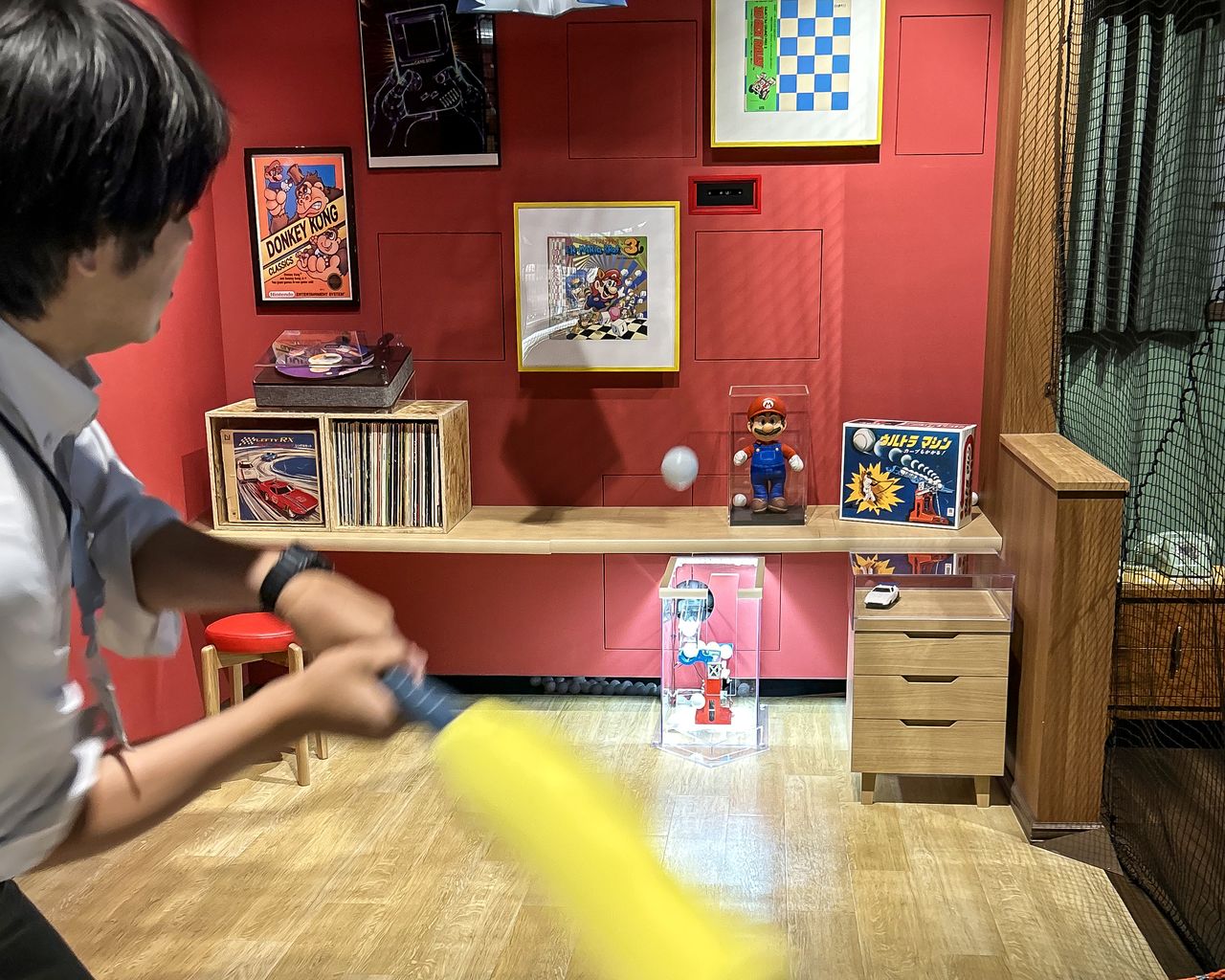
The Ultra Machine is a great stress-buster. (© Nippon.com)
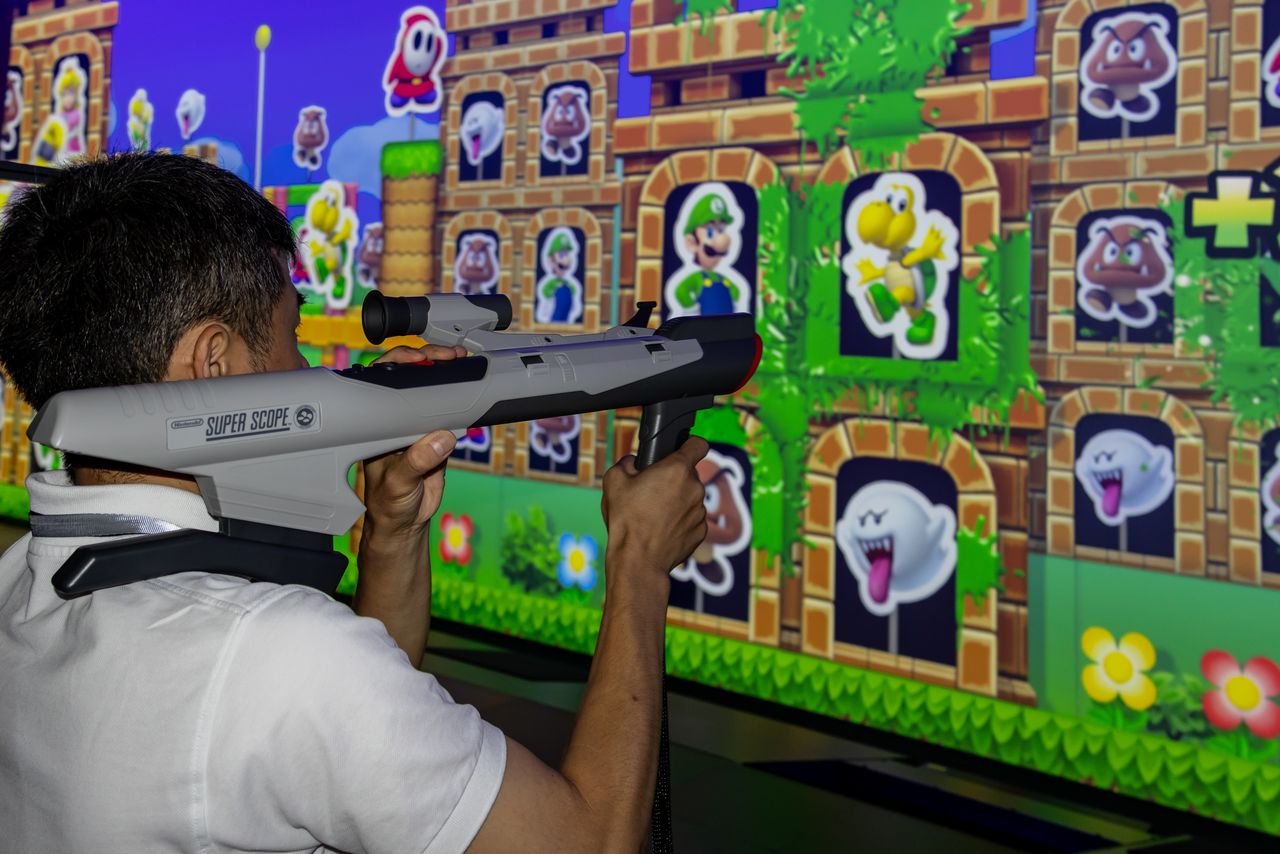
A re-creation of the Zapper & Scope with added Mario characters. (© Nippon.com)
Valuing Play and Creativity
There is also a Hatena Burger cafe inside the museum, which shares its name with its flagship dish. Visitors can mix and match their favorite toppings to create their own unique burger, using their smartphones to pick from what adds up to over 270,000 possible combinations. There are options for lacto-ovo vegetarians (who can eat eggs and dairy products).

Hatena Burger offers a range of options. (© Nippon.com)
Representative Director and Fellow Miyamoto Shigeru spoke in a video introducing the museum on YouTube. “In the more than 100 years since the company was founded, Nintendo has created many different forms of entertainment. Although the products we’ve made have changed with the times, our desire to create fun for the whole family remains the same. The Nintendo Museum is a place where you can learn about our commitment to crafting experiences that value play and creativity—both of which are integral to Nintendo.”
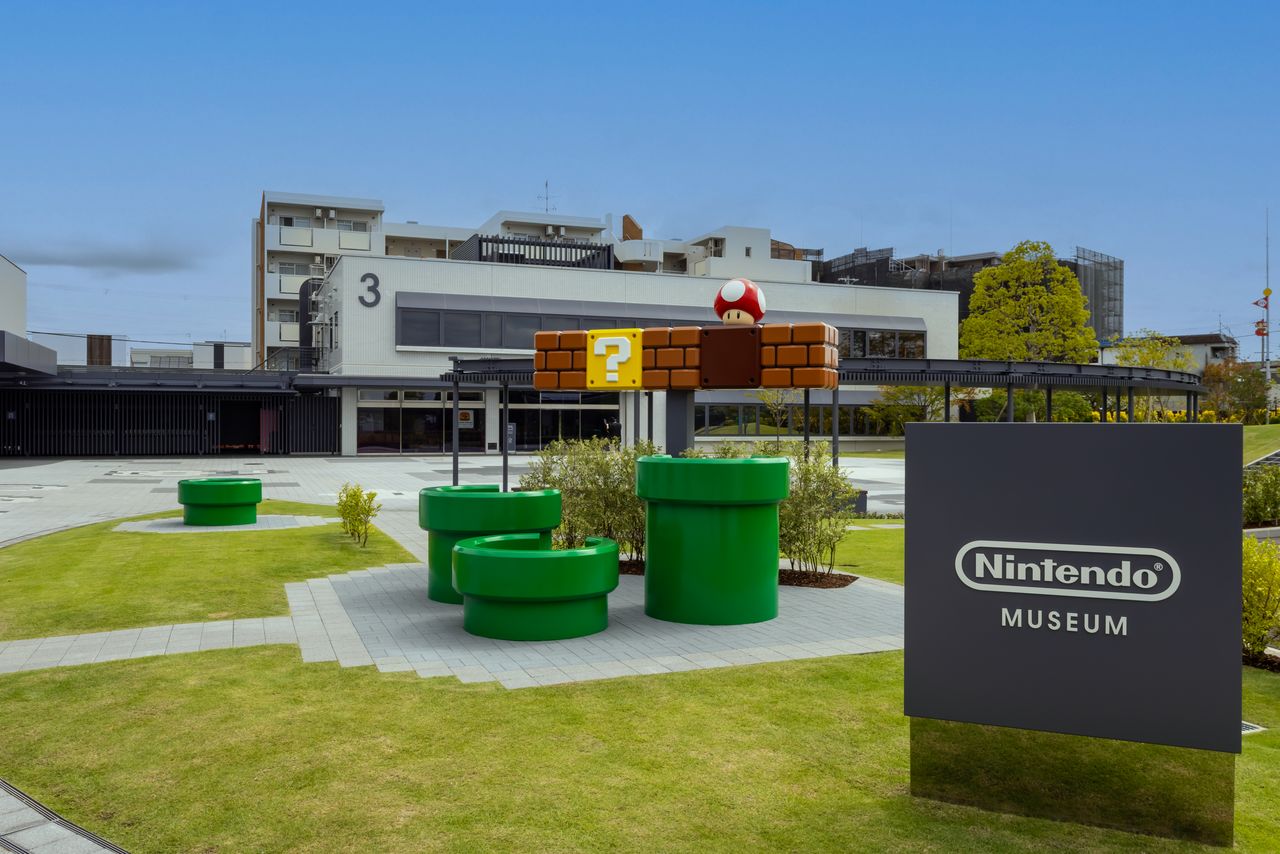
The Nintendo Museum welcomes visitors with a familiar scene. (© Nippon.com)
Nintendo has indicated it will move from being primarily a video game hardware and software company to an interactive content company, using its existing characters for amusement parks and movies. The Nintendo Museum is one step along that journey.
Nintendo Museum
- Address: 56 Kaguraden, Ogura-chō, Uji, Kyoto
- Hours: 10:00 am to 6:00 pm (last entry at 4:30 pm)
- Closed: Tuesdays (following Wednesday if Tuesday is a national holiday), year-end holidays.
- Ticket prices: Adults 18+ ¥3,300, older children 12–17 ¥2,200, younger children 6–11 ¥1,100, children under 6 are free.
- Tickets are by reservation only and sold by lottery three months in advance.
- Note that visitors in costume/cosplayers will not be admitted.
(Originally published in Japanese on September 25, 2024. Photos by Fujiwara Tomoyuki and Matsumoto Sōichi of Nippon.com unless otherwise noted. Banner photo: Giant controllers for playing games in pairs at the Nintendo Museum. © Nippon.com.)
